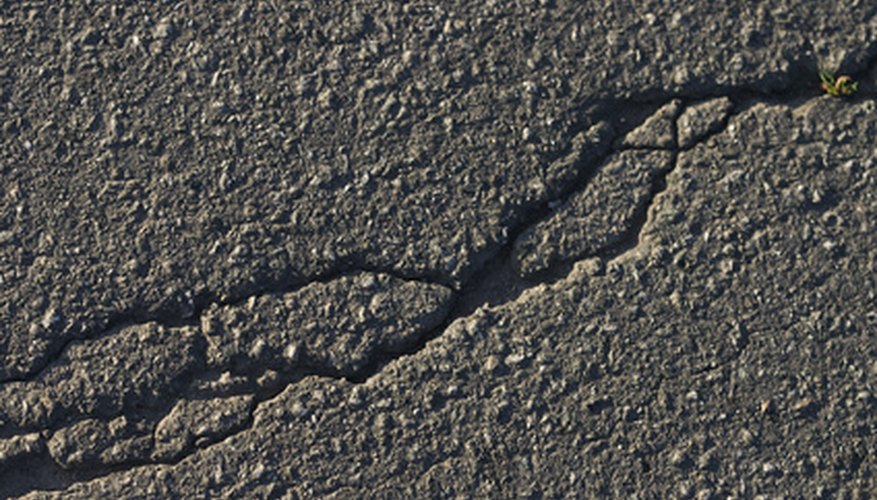When they put down your new asphalt driveway, it was a smooth, flat ribbon of pavement. Now it's begun to sink. Maybe it's developing pits and depressions or showing cracks. Or maybe the whole thing is just sinking into the ground. In all of these cases, the most likely explanation is the same: The surface underneath wasn't prepared properly.
Asphalt
The paving material we call asphalt is a mixture of liquid asphalt--a sticky material derived from petroleum--and aggregate, the gravel and sand that give the pavement its strength and structure. Though it seems solid when it's laid as a slab, asphalt is actually a liquid--albeit an extremely slow-flowing one. Heat enhances its liquid properties, which is why asphalt goes down hot, and why it gets soft in the sun.
Surface Preparation
If your driveway was properly installed, the asphalt is only the top layer. At the bottom is soil, which must be firmly compacted. The proper tool to use is a mechanical compactor, which tamps the soil by pounding and vibrating the surface. The point is to get the soil completely settled before the asphalt goes down. If it isn't properly compacted, the sheer weight of the asphalt will do the job itself--and the asphalt will sink.
- If your driveway was properly installed, the asphalt is only the top layer.
- At the bottom is soil, which must be firmly compacted.
Atop the soil goes a layer of crushed gravel, which must also be firmly compacted. Gravel that isn't settled will cause the same problems as poorly prepared soil: The asphalt will sink.
Underlying Problems
Although bad surface preparation is the most common cause of sinking asphalt, there are other possibilities. If there are large dead tree roots or stumps under the slab, these will decompose over time. As they break down, the soil above them will collapse, creating a slight depression in the surface. A rigid concrete slab might remain intact over such a depression, or might show just a crack, but asphalt's liquid nature will cause it to sink at that spot. Underground erosion could also be the culprit. Poor drainage or a broken water pipe can undermine the soil bed and cause the asphalt to sink.
- Although bad surface preparation is the most common cause of sinking asphalt, there are other possibilities.
- A rigid concrete slab might remain intact over such a depression, or might show just a crack, but asphalt's liquid nature will cause it to sink at that spot.
Solutions
If your asphalt driveway is showing pits, you could simply apply more asphalt to level out the surface, but this is at best a temporary measure. For starters, patched asphalt is splotchy and unsightly. But worse, as the patch weathers, it won't adhere well to the asphalt around it and will start break apart. A permanent solution is to cut away the sinking asphalt, properly compact the soil underneath, add and compact gravel, and put down a new asphalt slab. If the entire driveway is sinking, you may have to take it up and start over.
- If your asphalt driveway is showing pits, you could simply apply more asphalt to level out the surface, but this is at best a temporary measure.
Doing It Yourself
Surface preparation is a job that a reasonably capable do-it-yourselfer can handle. You can have fill dirt and gravel delivered, and you can get a mechanical compactor at a tool-rental shop. Laying down a new ribbon of hot asphalt, however, is a job for professionals.
